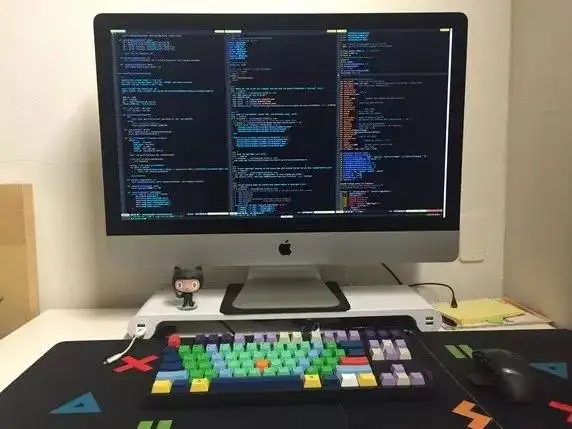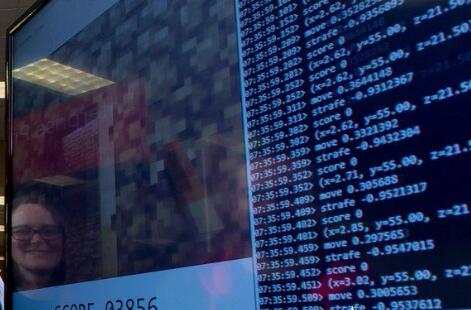Deep L-layer neural network
1 - General methodology
As usual you will follow the Deep Learning methodology to build the model:
1). Initialize parameters / Define hyperparameters
2). Loop for num_iterations:
a. Forward propagation
b. Compute cost function
c. Backward propagation
d. Update parameters (using parameters, and grads from backprop)
3). Use trained parameters to predict labels
2 - Architecture of your model
You will build two different models to distinguish cat images from non-cat images.
2.1 - 2-layer neural network

Figure 1: 2-layer neural network.
The model can be summarized as: INPUT -> LINEAR -> RELU -> LINEAR -> SIGMOID -> OUTPUT.
Detailed Architecture of figure 2:
 is then multiplied by the weight matrix of size
is then multiplied by the weight matrix of size 

 and add your intercept (bias).
and add your intercept (bias).
2.2 - L-layer deep neural network

Figure 2: L-layer neural network.
The model can be summarized as: [LINEAR -> RELU] × (L-1) -> LINEAR -> SIGMOID
Detailed Architecture of figure 3:
 is then multiplied by the weight matrix
is then multiplied by the weight matrix and then you add the intercept
and then you add the intercept  .The result is called the linear unit.
.The result is called the linear unit. ,depending on the model architecture.
,depending on the model architecture.
3 - Two-layer neural network
Question: Use the helper functions you have implemented to build a 2-layer neural network with the following structure: LINEAR -> RELU -> LINEAR -> SIGMOID. The functions you may need and their inputs are:
def initialize_parameters(n_x, n_h, n_y): ... return parameters def linear_activation_forward(A_prev, W, b, activation): ... return A, cache def compute_cost(AL, Y): ... return cost def linear_activation_backward(dA, cache, activation): ... return dA_prev, dW, db def update_parameters(parameters, grads, learning_rate): ... return parameters def predict(train_x, train_y, parameters): ... return Accuracy
3.1 - initialize_parameters(n_x, n_h, n_y)
Create and initialize the parameters of the 2-layer neural network.
Instructions:
# GRADED FUNCTION: initialize_parameters def initialize_parameters(n_x, n_h, n_y): """ Argument: n_x -- size of the input layer n_h -- size of the hidden layer n_y -- size of the output layer Returns: parameters -- python dictionary containing your parameters: W1 -- weight matrix of shape (n_h, n_x) b1 -- bias vector of shape (n_h, 1) W2 -- weight matrix of shape (n_y, n_h) b2 -- bias vector of shape (n_y, 1) """ np.random.seed(1) ### START CODE HERE ### (≈ 4 lines of code) W1 = np.random.randn(n_h, n_x)*0.01 b1 = np.zeros((n_h, 1)) W2 = np.random.randn(n_y, n_h)*0.01 b2 = np.zeros((n_y, 1)) ### END CODE HERE ### assert(W1.shape == (n_h, n_x)) assert(b1.shape == (n_h, 1)) assert(W2.shape == (n_y, n_h)) assert(b2.shape == (n_y, 1)) parameters = {"W1": W1, "b1": b1, "W2": W2, "b2": b2} return parameters
3.2 - linear_activation_forward(A_prev, W, b, activation)
# GRADED FUNCTION: linear_activation_forward def linear_activation_forward(A_prev, W, b, activation): """ Implement the forward propagation for the LINEAR->ACTIVATION layer Arguments: A_prev -- activations from previous layer (or input data): (size of previous layer, number of examples) W -- weights matrix: numpy array of shape (size of current layer, size of previous layer) b -- bias vector, numpy array of shape (size of the current layer, 1) activation -- the activation to be used in this layer, stored as a text string: "sigmoid" or "relu" Returns: A -- the output of the activation function, also called the post-activation value(后面的值) cache -- a python dictionary containing "linear_cache" and "activation_cache"; stored for computing the backward pass efficiently """ if activation == "sigmoid": # Inputs: "A_prev, W, b". Outputs: "A, activation_cache". ### START CODE HERE ### (≈ 2 lines of code) Z, linear_cache = linear_forward(A_prev, W, b) # linear_cache (A_prev,W,b) A, activation_cache = sigmoid(Z) # activation_cache (Z) ### END CODE HERE ### elif activation == "relu": # Inputs: "A_prev, W, b". Outputs: "A, activation_cache". ### START CODE HERE ### (≈ 2 lines of code) Z, linear_cache =linear_forward(A_prev, W, b) # linear_cache (A_prev,W,b) A, activation_cache = relu(Z) # activation_cache (Z) ### END CODE HERE ### assert (A.shape == (W.shape[0], A_prev.shape[1])) cache = (linear_cache, activation_cache) # cache (A_prev,W,b,Z) return A, cache
3.3 - compute_cost(AL, Y)
Compute the cross-entropy cost J, using the following formula:

# GRADED FUNCTION: compute_cost def compute_cost(AL, Y): """ Implement the cost function defined by equation (7). Arguments: AL -- probability vector corresponding to your label predictions, shape (1, number of examples) Y -- true "label" vector (for example: containing 0 if non-cat, 1 if cat), shape (1, number of examples) Returns: cost -- cross-entropy cost """ m = Y.shape[1] # Compute loss from aL and y. ### START CODE HERE ### (≈ 1 lines of code) cost = - (1/m)*(np.dot(Y, np.log(AL).T) + np.dot(1 - Y, np.log(1-AL).T)) ### END CODE HERE ### cost = np.squeeze(cost) # To make sure your cost's shape is what we expect (e.g. this turns [[17]] into 17). assert(cost.shape == ()) return cost
3.4 - linear_activation_backward(dA, cache, activation)
# GRADED FUNCTION: linear_activation_backward def linear_activation_backward(dA, cache, activation): """ Implement the backward propagation for the LINEAR->ACTIVATION layer. Arguments: dA -- post-activation gradient for current layer l cache -- tuple of values (linear_cache, activation_cache) we store for computing backward propagation efficiently activation -- the activation to be used in this layer, stored as a text string: "sigmoid" or "relu" Returns: dA_prev -- Gradient of the cost with respect to the activation (of the previous layer l-1), same shape as A_prev dW -- Gradient of the cost with respect to W (current layer l), same shape as W db -- Gradient of the cost with respect to b (current layer l), same shape as b """ linear_cache, activation_cache = cache if activation == "relu": ### START CODE HERE ### (≈ 2 lines of code) dZ = relu_backward(dA, activation_cache) dA_prev, dW, db = linear_backward(dZ, linear_cache) ### END CODE HERE ### elif activation == "sigmoid": ### START CODE HERE ### (≈ 2 lines of code) dZ = sigmoid_backward(dA, activation_cache) dA_prev, dW, db = linear_backward(dZ, linear_cache) ### END CODE HERE ### return dA_prev, dW, db
3.5 - update_parameters
# GRADED FUNCTION: update_parameters def update_parameters(parameters, grads, learning_rate): """ Update parameters using gradient descent Arguments: parameters -- python dictionary containing your parameters grads -- python dictionary containing your gradients, output of L_model_backward Returns: parameters -- python dictionary containing your updated parameters parameters["W" + str(l)] = ... parameters["b" + str(l)] = ... """ L = len(parameters) // 2 # number of layers in the neural network # Update rule for each parameter. Use a for loop. ### START CODE HERE ### (≈ 3 lines of code) for l in range(1, L+1): # l=`,2,3,...,L parameters["W" + str(l)] = parameters["W" + str(l)] - learning_rate*grads["dW" + str(l)] parameters["b" + str(l)] = parameters["b" + str(l)] - learning_rate*grads["db" + str(l)] ### END CODE HERE ### return parameters
3.6 - predict(train_x, train_y, parameters)
pred_train = predict(train_x, train_y, parameters)
4 - L-layer neural network
Question: Use the helper functions you have implemented previously to build an LL-layer neural network with the following structure: [LINEAR -> RELU]×(L-1) -> LINEAR -> SIGMOID. The functions you may need and their inputs are:
def initialize_parameters_deep(layer_dims): ... return parameters def L_model_forward(X, parameters): ... return AL, caches def compute_cost(AL, Y): ... return cost def L_model_backward(AL, Y, caches): ... return grads def update_parameters(parameters, grads, learning_rate): ... return parameters In [14]: def predict(train_x, train_y, parameters): ... return Accuracy
4.1 - initialize_parameters_deep(layer_dims)
Implement initialization for an L-layer Neural Network.
Instructions:
if L == 1: parameters["W" + str(L)] = np.random.randn(layer_dims[1], layer_dims[0]) * 0.01 parameters["b" + str(L)] = np.zeros((layer_dims[1], 1))
# GRADED FUNCTION: initialize_parameters_deep def initialize_parameters_deep(layer_dims): """ Arguments: layer_dims -- python array (list) containing the dimensions of each layer in our network Returns: parameters -- python dictionary containing your parameters "W1", "b1", ..., "WL", "bL": Wl -- weight matrix of shape (layer_dims[l], layer_dims[l-1]) bl -- bias vector of shape (layer_dims[l], 1) """ np.random.seed(3) parameters = {} L = len(layer_dims) # number of layers in the network for l in range(1, L): ### START CODE HERE ### (≈ 2 lines of code) parameters['W' + str(l)] = np.random.randn(layer_dims[l], layer_dims[l-1]) * 0.01 parameters['b' + str(l)] = np.zeros((layer_dims[l], 1)) ### END CODE HERE ### assert(parameters['W' + str(l)].shape == (layer_dims[l], layer_dims[l-1])) assert(parameters['b' + str(l)].shape == (layer_dims[l], 1)) return parameters
4.2 - L_model_forward(X, parameters)
# GRADED FUNCTION: L_model_forward def L_model_forward(X, parameters): """ Implement forward propagation for the [LINEAR->RELU]*(L-1)->LINEAR->SIGMOID computation Arguments: X -- data, numpy array of shape (input size, number of examples) parameters -- output of initialize_parameters_deep() Returns: AL -- last post-activation value caches -- list of caches containing: every cache of linear_relu_forward() (there are L-1 of them, indexed from 0 to L-2) the cache of linear_sigmoid_forward() (there is one, indexed L-1) """ caches = [] A = X L = len(parameters) // 2 # number of layers in the neural network # Implement [LINEAR -> RELU]*(L-1). Add "cache" to the "caches" list. for l in range(1, L): #注意range是(1,L),最后的L不算进循环,l实际是从1到 L-1 A_prev = A ### START CODE HERE ### (≈ 2 lines of code) A, cache = linear_activation_forward(A_prev, parameters['W'+str(l)], parameters['b'+str(l)], activation = "relu") caches.append(cache) ### END CODE HERE ### # Implement LINEAR -> SIGMOID. Add "cache" to the "caches" list. ### START CODE HERE ### (≈ 2 lines of code) AL, cache = linear_activation_forward(A, parameters['W'+str(L)], parameters['b'+str(L)], activation = "sigmoid") caches.append(cache) ### END CODE HERE ### assert(AL.shape == (1,X.shape[1])) return AL, caches # caches (A_prev,W,b,Z)
4.3 - compute_cost(AL, Y)
Compute the cross-entropy cost J, using the following formula:

# GRADED FUNCTION: compute_cost def compute_cost(AL, Y): """ Implement the cost function defined by equation (7). Arguments: AL -- probability vector corresponding to your label predictions, shape (1, number of examples) Y -- true "label" vector (for example: containing 0 if non-cat, 1 if cat), shape (1, number of examples) Returns: cost -- cross-entropy cost """ m = Y.shape[1] # Compute loss from aL and y. ### START CODE HERE ### (≈ 1 lines of code) cost = - (1/m)*(np.dot(Y, np.log(AL).T) + np.dot(1 - Y, np.log(1-AL).T)) ### END CODE HERE ### cost = np.squeeze(cost) # To make sure your cost's shape is what we expect (e.g. this turns [[17]] into 17). assert(cost.shape == ()) return cost
4.4 - L_model_backward(AL, Y, caches)
# GRADED FUNCTION: L_model_backward def L_model_backward(AL, Y, caches): """ Implement the backward propagation for the [LINEAR->RELU] * (L-1) -> LINEAR -> SIGMOID group Arguments: AL -- probability vector, output of the forward propagation (L_model_forward()) Y -- true "label" vector (containing 0 if non-cat, 1 if cat) caches -- list of caches containing: every cache of linear_activation_forward() with "relu" (it's caches[l], for l in range(L-1) i.e l = 0...L-2) the cache of linear_activation_forward() with "sigmoid" (it's caches[L-1]) Returns: grads -- A dictionary with the gradients grads["dA" + str(l)] = ... grads["dW" + str(l)] = ... grads["db" + str(l)] = ... """ grads = {} L = len(caches) # the number of layers m = AL.shape[1] Y = Y.reshape(AL.shape) # after this line, Y is the same shape as AL # Initializing the backpropagation ### START CODE HERE ### (1 line of code) dAL = - (np.divide(Y, AL) - np.divide(1 - Y, 1 - AL)) # derivative of cost with respect to AL ### END CODE HERE ### # Lth layer (SIGMOID -> LINEAR) gradients. Inputs: "AL, Y, caches". Outputs: "grads["dAL"], grads["dWL"], grads["dbL"] ### START CODE HERE ### (approx. 2 lines) current_cache = caches[L-1] grads["dA" + str(L)], grads["dW" + str(L)], grads["db" + str(L)] =linear_activation_backward(dAL, current_cache, activation = "sigmoid") ### END CODE HERE ### for l in reversed(range(L-1)): # l=L-2,L-3,...,2,1,0 # lth layer: (RELU -> LINEAR) gradients. # Inputs: "grads["dA" + str(l + 2)], caches". Outputs: "grads["dA" + str(l + 1)] , grads["dW" + str(l + 1)] , grads["db" + str(l + 1)] ### START CODE HERE ### (approx. 5 lines) current_cache = caches[l] # l= L-2,L-1,...,2,1,0 当l=L-2时 dA_prev_temp, dW_temp, db_temp = linear_activation_backward(grads["dA" + str(l+2)], current_cache, activation = "relu") # l+2=L grads["dA" + str(l + 1)] = dA_prev_temp #l=L-1 grads["dW" + str(l + 1)] = dW_temp #l+1=L-1 grads["db" + str(l + 1)] = db_temp #l+1=L-1 ### END CODE HERE ### return grads
4.5 - update_parameters
# GRADED FUNCTION: update_parameters def update_parameters(parameters, grads, learning_rate): """ Update parameters using gradient descent Arguments: parameters -- python dictionary containing your parameters grads -- python dictionary containing your gradients, output of L_model_backward Returns: parameters -- python dictionary containing your updated parameters parameters["W" + str(l)] = ... parameters["b" + str(l)] = ... """ L = len(parameters) // 2 # number of layers in the neural network # Update rule for each parameter. Use a for loop. ### START CODE HERE ### (≈ 3 lines of code) for l in range(1, L+1): # l=`,2,3,...,L parameters["W" + str(l)] = parameters["W" + str(l)] - learning_rate*grads["dW" + str(l)] parameters["b" + str(l)] = parameters["b" + str(l)] - learning_rate*grads["db" + str(l)] ### END CODE HERE ### return parameters
4.6 - predict(train_x, train_y, parameters)
pred_train = predict(train_x, train_y, parameters)
pred_test = predict(test_x, test_y, parameters)
【参考】:
[1] https://hub.coursera-notebooks.org/user/rdzflaokljifhqibzgygqq/notebooks/Week%204/Deep%20Neural%20Network%20Application:%20Image%20Classification/Deep%20Neural%20Network%20-%20Application%20v3.ipynb
[2] https://hub.coursera-notebooks.org/user/rdzflaokljifhqibzgygqq/notebooks/Week%204/Building%20your%20Deep%20Neural%20Network%20-%20Step%20by%20Step/Building%20your%20Deep%20Neural%20Network%20-%20Step%20by%20Step%20v5.ipynb
【附录】:
L层神经网络的详细推导,见hezhiyao的github: https://github.com/hezhiyao/Deep-L-layer-neural-network-Notes

 京公网安备 11010802041100号 | 京ICP备19059560号-4 | PHP1.CN 第一PHP社区 版权所有
京公网安备 11010802041100号 | 京ICP备19059560号-4 | PHP1.CN 第一PHP社区 版权所有